Angels & Demons Read online
Angels & Demons
( Robert Langdon - 1 )
Dan Brown
An ancient secret brotherhood.
A devastating new weapon of destruction.
An unthinkable target.
When world-renowned Harvard symbologist Robert Langdon is summoned to his first assignment to a Swiss research facility to analyze a mysterious symbol—seared into the chest of a murdered physicist—he discovers evidence of the unimaginable: the resurgence of an ancient secret brotherhood known as the Illuminati… the most powerful underground organization ever to walk the earth. The Illuminati has now surfaced to carry out the final phase of its legendary vendetta against its most hated enemy—the Catholic Church.
Langdon’s worst fears are confirmed on the eve of the Vatican’s holy conclave, when a messenger of the Illuminati announces they have hidden an unstoppable time bomb at the very heart of Vatican City. With the countdown under way, Langdon jets to Rome to join forces with Vittoria Vetra, a beautiful and mysterious Italian scientist, to assist the Vatican in a desperate bid for survival.
Embarking on a frantic hunt through sealed crypts, dangerous catacombs, deserted cathedrals, and the most secretive vault on earth, Langdon and Vetra follow a 400-year-old trail of ancient symbols that snakes across Rome toward the long-forgotten Illuminati lair… a clandestine location that contains the only hope for Vatican salvation.
An explosive international thriller, “Angels & Demons” careens from enlightening epiphanies to dark truths as the battle between science and religion turns to war.
Angels & Demons
by Dan Brown
For Blythe…
Acknowledgments
A debt of gratitude to Emily Bestler, Jason Kaufman, Ben Kaplan, and everyone at Pocket Books for their belief in this project.
To my friend and agent, Jake Elwell, for his enthusiasm and unflagging effort.
To the legendary George Wieser, for convincing me to write novels.
To my dear friend Irv Sittler, for facilitating my audience with the Pope, secreting me into parts of Vatican City few ever see, and making my time in Rome unforgettable.
To one of the most ingenious and gifted artists alive, John Langdon, who rose brilliantly to my impossible challenge and created the ambigrams for this novel.
To Stan Planton, head librarian, Ohio University-Chillicothe, for being my number one source of information on countless topics.
To Sylvia Cavazzini, for her gracious tour through the secret Passetto.
And to the best parents a kid could hope for, Dick and Connie Brown… for everything.
Thanks also to CERN, Henry Beckett, Brett Trotter, the Pontifical Academy of Science, Brookhaven Institute, FermiLab Library, Olga Wieser, Don Ulsch of the National Security Institute, Caroline H. Thompson at University of Wales, Kathryn Gerhard and Omar Al Kindi, John Pike and the Federation of American Scientists, Heimlich Viserholder, Corinna and Davis Hammond, Aizaz Ali, the Galileo Project of Rice University, Julie Lynn and Charlie Ryan at Mockingbird Pictures, Gary Goldstein, Dave (Vilas) Arnold and Andra Crawford, the GlobalFraternal Network, the Phillips Exeter Academy Library, Jim Barrington, John Maier, the exceptionally keen eye of Margie Wachtel, alt.masonic.members, Alan Wooley, the Library of Congress Vatican Codices Exhibit, Lisa Callamaro and the Callamaro Agency, Jon A. Stowell, Musei Vaticani, Aldo Baggia, Noah Alireza, Harriet Walker, Charles Terry, Micron Electronics, Mindy Homan, Nancy andDick Curtin, Thomas D. Nadeau, NuvoMedia andRocket E-books, Frank and Sylvia Kennedy, Rome Board of Tourism, Maestro GregoryBrown, Val Brown, Werner Brandes, Paul Krupin at Direct Contact, Paul Stark, Tom King at Computalk Network, Sandy and Jerry Nolan, Web guru Linda George, the National Academy of Art in Rome, physicist and fellow scribe Steve Howe, Robert Weston, the Water Street Bookstore in Exeter, New Hampshire, and the Vatican Observatory.
Fact
The world’s largest scientific research facility—Switzerland’s Conseil Européen pour la Recherche Nucléaire (CERN)—recently succeeded in producing the first particles of antimatter. Antimatter is identical to physical matter except that it is composed of particles whose electric charges are opposite to those found in normal matter.
Antimatter is the most powerful energy source known to man. It releases energy with 100 percent efficiency (nuclear fission is 1.5 percent efficient). Antimatter creates no pollution or radiation, and a droplet could power New York City for a full day.
There is, however, one catch…
Antimatter is highly unstable. It ignites when it comes in contact with absolutely anything… even air. A single gram of antimatter contains the energy of a 20-kiloton nuclear bomb—the size of the bomb dropped on Hiroshima.
Until recently antimatter has been created only in very small amounts (a few atoms at a time). But CERN has now broken ground on its new Antiproton Decelerator—an advanced antimatter production facility that promises to create antimatter in much larger quantities.
One question looms: Will this highly volatile substance save the world, or will it be used to create the most deadly weapon ever made?
Author’s Note
References to all works of art, tombs, tunnels, and architecture in Rome are entirely factual (as are their exact locations). They can still be seen today.
The brotherhood of the Illuminati is also factual.
Prologue
Physicist Leonardo Vetra smelled burning flesh, and he knew it was his own. He stared up in terror at the dark figure looming over him. “What do you want!”
“La chiave,” the raspy voice replied. “The password.”
“But… I don’t—”
The intruder pressed down again, grinding the white hot object deeper into Vetra’s chest. There was the hiss of broiling flesh.
Vetra cried out in agony. “There is no password!” He felt himself drifting toward unconsciousness.
The figure glared. “Ne avevo paura. I was afraid of that.”
Vetra fought to keep his senses, but the darkness was closing in. His only solace was in knowing his attacker would never obtain what he had come for. A moment later, however, the figure produced a blade and brought it to Vetra’s face. The blade hovered. Carefully. Surgically.
“For the love of God!” Vetra screamed. But it was too late.
1
High atop the steps of the Pyramid of Giza a young woman laughed and called down to him. “Robert, hurry up! I knew I should have married a younger man!” Her smile was magic.
He struggled to keep up, but his legs felt like stone. “Wait,” he begged. “Please…”
As he climbed, his vision began to blur. There was a thundering in his ears. I must reach her! But when he looked up again, the woman had disappeared. In her place stood an old man with rotting teeth. The man stared down, curling his lips into a lonely grimace. Then he let out a scream of anguish that resounded across the desert.
Robert Langdon awoke with a start from his nightmare. The phone beside his bed was ringing. Dazed, he picked up the receiver.
“Hello?”
“I’m looking for Robert Langdon,” a man’s voice said.
Langdon sat up in his empty bed and tried to clear his mind. “This… is Robert Langdon.” He squinted at his digital clock. It was 5:18 A.M.
“I must see you immediately.”
“Who is this?”
“My name is Maximilian Kohler. I’m a discrete particle physicist.”
“A what?” Langdon could barely focus. “Are you sure you’ve got the right Langdon?”
“You’re a professor of religious iconology at Harvard University. You’ve written three books on symbology and—”
“Do you know what time it is?”
“I apologize. I have something you need to see. I can’t di
scuss it on the phone.”
A knowing groan escaped Langdon’s lips. This had happened before. One of the perils of writing books about religious symbology was the calls from religious zealots who wanted him to confirm their latest sign from God. Last month a stripper from Oklahoma had promised Langdon the best sex of his life if he would fly down and verify the authenticity of a cruciform that had magically appeared on her bed sheets. The Shroud of Tulsa, Langdon had called it.
“How did you get my number?” Langdon tried to be polite, despite the hour.
“On the Worldwide Web. The site for your book.”
Langdon frowned. He was damn sure his book’s site did not include his home phone number. The man was obviously lying.
“I need to see you,” the caller insisted. “I’ll pay you well.”
Now Langdon was getting mad. “I’m sorry, but I really—”
“If you leave immediately, you can be here by—”
“I’m not going anywhere! It’s five o’clock in the morning!” Langdon hung up and collapsed back in bed. He closed his eyes and tried to fall back asleep. It was no use. The dream was emblazoned in his mind. Reluctantly, he put on his robe and went downstairs.
Robert Langdon wandered barefoot through his deserted Massachusetts Victorian home and nursed his ritual insomnia remedy—a mug of steaming Nestlé’s Quik. The April moon filtered through the bay windows and played on the oriental carpets. Langdon’s colleagues often joked that his place looked more like an anthropology museum than a home. His shelves were packed with religious artifacts from around the world—an ekuaba from Ghana, a gold cross from Spain, a cycladic idol from the Aegean, and even a rare woven boccus from Borneo, a young warrior’s symbol of perpetual youth.
As Langdon sat on his brass Maharishi’s chest and savored the warmth of the chocolate, the bay window caught his reflection. The image was distorted and pale… like a ghost. An aging ghost, he thought, cruelly reminded that his youthful spirit was living in a mortal shell.
Although not overly handsome in a classical sense, the forty-five-year-old Langdon had what his female colleagues referred to as an “erudite” appeal—wisps of gray in his thick brown hair, probing blue eyes, an arrestingly deep voice, and the strong, carefree smile of a collegiate athlete. A varsity diver in prep school and college, Langdon still had the body of a swimmer, a toned, six-foot physique that he vigilantly maintained with fifty laps a day in the university pool.
Langdon’s friends had always viewed him as a bit of an enigma—a man caught between centuries. On weekends he could be seen lounging on the quad in blue jeans, discussing computer graphics or religious history with students; other times he could be spotted in his Harris tweed and paisley vest, photographed in the pages of upscale art magazines at museum openings where he had been asked to lecture.
Although a tough teacher and strict disciplinarian, Langdon was the first to embrace what he hailed as the “lost art of good clean fun.” He relished recreation with an infectious fanaticism that had earned him a fraternal acceptance among his students. His campus nickname—“The Dolphin”—was a reference both to his affable nature and his legendary ability to dive into a pool and outmaneuver the entire opposing squad in a water polo match.
As Langdon sat alone, absently gazing into the darkness, the silence of his home was shattered again, this time by the ring of his fax machine. Too exhausted to be annoyed, Langdon forced a tired chuckle.
God’s people, he thought. Two thousand years of waiting for their Messiah, and they’re still persistent as hell.
Wearily, he returned his empty mug to the kitchen and walked slowly to his oak-paneled study. The incoming fax lay in the tray. Sighing, he scooped up the paper and looked at it.
Instantly, a wave of nausea hit him.
The image on the page was that of a human corpse. The body had been stripped naked, and its head had been twisted, facing completely backward. On the victim’s chest was a terrible burn. The man had been branded… imprinted with a single word. It was a word Langdon knew well. Very well. He stared at the ornate lettering in disbelief.
“Illuminati,” he stammered, his heart pounding. It can’t be…
In slow motion, afraid of what he was about to witness, Langdon rotated the fax 180 degrees. He looked at the word upside down.
Instantly, the breath went out of him. It was like he had been hit by a truck. Barely able to believe his eyes, he rotated the fax again, reading the brand right-side up and then upside down.
“Illuminati,” he whispered.
Stunned, Langdon collapsed in a chair. He sat a moment in utter bewilderment. Gradually, his eyes were drawn to the blinking red light on his fax machine. Whoever had sent this fax was still on the line… waiting to talk. Langdon gazed at the blinking light a long time.
Then, trembling, he picked up the receiver.
2
“Do I have your attention now?” the man’s voice said when Langdon finally answered the line.
“Yes, sir, you damn well do. You want to explain yourself?”
“I tried to tell you before.” The voice was rigid, mechanical. “I’m a physicist. I run a research facility. We’ve had a murder. You saw the body.”
“How did you find me?” Langdon could barely focus. His mind was racing from the image on the fax.
“I already told you. The Worldwide Web. The site for your book, The Art of the Illuminati.”
Langdon tried to gather his thoughts. His book was virtually unknown in mainstream literary circles, but it had developed quite a following on-line. Nonetheless, the caller’s claim still made no sense. “That page has no contact information,” Langdon challenged. “I’m certain of it.”
“I have people here at the lab very adept at extracting user information from the Web.”
Langdon was skeptical. “Sounds like your lab knows a lot about the Web.”
“We should,” the man fired back. “We invented it.”
Something in the man’s voice told Langdon he was not joking.
“I must see you,” the caller insisted. “This is not a matter we can discuss on the phone. My lab is only an hour’s flight from Boston.”
Langdon stood in the dim light of his study and analyzed the fax in his hand. The image was overpowering, possibly representing the epigraphical find of the century, a decade of his research confirmed in a single symbol.
“It’s urgent,” the voice pressured.
Langdon’s eyes were locked on the brand. Illuminati, he read over and over. His work had always been based on the symbolic equivalent of fossils—ancient documents and historical hearsay—but this image before him was today. Present tense. He felt like a paleontologist coming face to face with a living dinosaur.
“I’ve taken the liberty of sending a plane for you,” the voice said. “It will be in Boston in twenty minutes.”
Langdon felt his mouth go dry. An hour’s flight…
“Please forgive my presumption,” the voice said. “I need you here.”
Langdon looked again at the fax—an ancient myth confirmed in black and white. The implications were frightening. He gazed absently through the bay window. The first hint of dawn was sifting through the birch trees in his backyard, but the view looked somehow different this morning. As an odd combination of fear and exhilaration settled over him, Langdon knew he had no choice.
“You win,” he said. “Tell me where to meet the plane.”
3
Thousands of miles away, two men were meeting. The chamber was dark. Medieval. Stone.
“Benvenuto,” the man in charge said. He was seated in the shadows, out of sight. “Were you successful?”
“Si,” the dark figure replied. “Perfectamente.” His words were as hard as the rock walls.
“And there will be no doubt who is responsible?”
“None.”
“Superb. Do you have what I asked for?”
The killer’s eyes glistened, black like oil. He produced a he
avy electronic device and set it on the table.
The man in the shadows seemed pleased. “You have done well.”

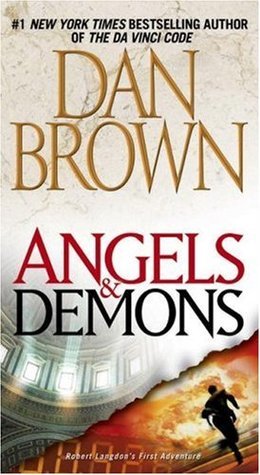 Angels & Demons
Angels & Demons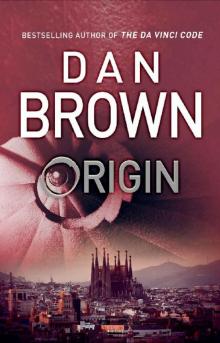 Origin
Origin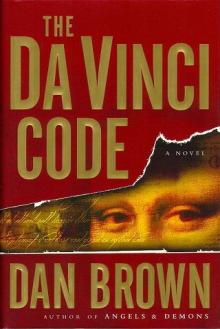 The Da Vinci Code
The Da Vinci Code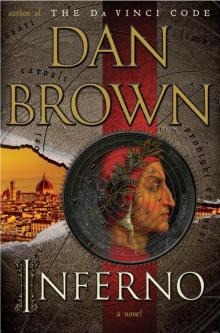 Inferno
Inferno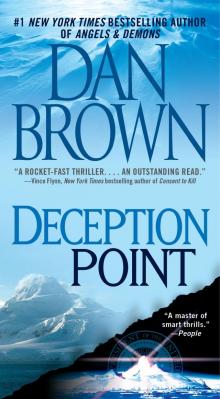 Deception Point
Deception Point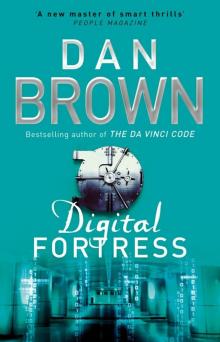 Digital Fortress
Digital Fortress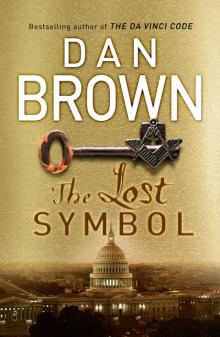 The Lost Symbol
The Lost Symbol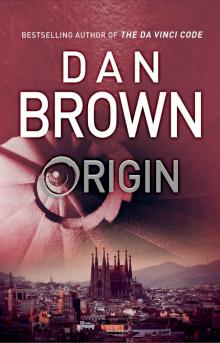 Origin: (Robert Langdon Book 5)
Origin: (Robert Langdon Book 5)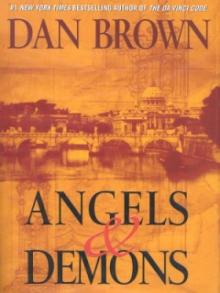 Angles & Demons
Angles & Demons Inferno: A Novel
Inferno: A Novel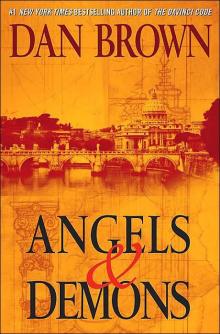 Angels & Demons rl-1
Angels & Demons rl-1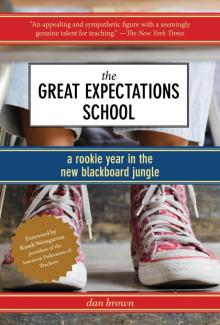 The Great Expectations School
The Great Expectations School The Lost Symbol rl-3
The Lost Symbol rl-3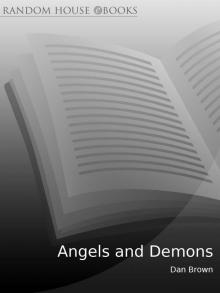 Angels and Demons
Angels and Demons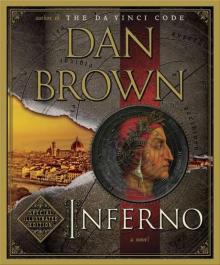 Inferno: Special Illustrated Edition: Featuring Robert Langdon
Inferno: Special Illustrated Edition: Featuring Robert Langdon